Etna Volcano
UNESCO World Heritage since 2013
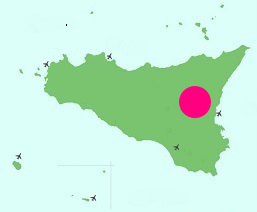
In an almost constant state of activity and emitting frequent eruptions, Europe’s largest active volcano has an almost overwhelming presence over eastern Sicily. Somehow no trip to Sicily seems absolutely complete without a visit to Mount Etna.
Ancient navigators considered it the highest point on Earth. Its name derives from a Greek word meaning ‘to burn’ but to the Arabs it was Gibel Utlamat—the mountain of mountains -and the ancient Greek poet Pindar (518-438 b.C) described it as the column that supports the sky.
Certainly it is the most monumental land-form in the Mediterranean, covering an area of 1570 km² with a 212km perimeter. On clear days the peak is visible over 155 miles (250 Km) away. It is around 10,900 feet (3,323 m) high and the crater has a diameter of about 20 miles (32 Km). Eruptions occur, often with staggering ferocity, about once every five to ten years.
For all its sinister splendour, Etna is a young mountain, believed to have begun life around 500,000 years ago, bursting from the seabed of a vanished gulf in what is now the Plain of Catania. Over the millennia, and the last 60,000 years in particular, it has built layer upon layer of ash and lava to create the colossal peak that casts its shadow over much of eastern Sicily.
The first recorded eruption was in 475 BC. Since then, there have been at least 250 eruptions—90 of them major ones and the last in 2003. The most catastrophic was in 1669, when the mountain was torn apart, leaving a gorge on its southern flanks 16 miles (26 Km) long. Magma flowed for 122 days, engulfing the town of Catania, while ash was thrown 60 miles. The lava took eight years to cool, and peasants, records report, were able to boil water in it long after the eruption.
Today, Etna is almost always blazing, if not erupting, its distinctive coronet of smoke a familiar sight across much Sicily. While black smoke is apparently a good sign, white smoke is a more sinister portent.
Etna’s volcanic character is marked by its tendency to split at the seams, rather than explode from a central point. Over the years these ruptures have added 350 secondary craters to the four larger craters near the summit. This quartet has accounted for most of the activity of the last 30 years, in particular the so-called Bocca Nuova, or ‘new mouth’, the most active crater since the early 1990s.
Allow at least two days to do justice to the region around Etna, devoting one day to getting as close to the summit as conditions allow with a qualified guide. This will take you onto the barren, lunar-like upper slopes, where pumice litters the lava fields, and shifting sands and powdered ash drift across macabre hills. If you are lucky you will enjoy not only one of Europe’s strangest landscapes, but also some of its most remarkable views.
Spend a second day exploring the volcano’s very different lower slopes, best seen as a circular tour, either on the Circumetnea railroad, or on the road that parallels its tracks for much of its course. Both routes virtually encircle the volcano, passing through a succession of tiny, often picturesque villages, and offering glimpses of a pastoral landscape carpeted with forests of larch and beech, vineyards, orange groves, and orchards of pistachio and almond that have sprung from Etna’s fertile soils.
Seeing the volcano
Visits to Etna’s upper reaches can be made from either the north or the south side of the volcano, and in particular from two base stations: Piano Provenzana, a ski station on the northern slope at about 5,970 feet (1,820 m), with a car park and winter ski lift; and the Rifugio Sapienza (the more popular), a collection of shops, souvenir stands, large car park, and restaurants on the southern slope at 6,262 feet (1,909 m). Both can be reached by road: the 21-mile (34 Km) drive from Catania to via Nicolosi leads through the lava fields, while the similar-length route to Piano Provenzana from Taormina via Linguaglossa winds through charming pine woods.
There are three options for visiting Mount Etna. The first is to make your way by car or by bus to the Rifugio Sapienza and buy a ticket for a 20-person, off-road vehicle that transport visitors to around 8,850 feet (2,697 m). From here, a qualified guide takes you on foot another 650 feet (198 m), with the option (additional charge) of ascending to safe areas nearer the summit craters, subject to conditions. Access to or around the crater edges is strictly forbidden.
The second option is to join a day-long organized tour, departing either from Catania or Taormina. This includes transport to the Rifugio Sapienza, warm clothing and sturdy footwear, and, for an additional fee, an excursion via off-road vehicle.
The third approach is to make your own way to the Rifugio and then hike to the upper slopes, a rather repetitive route that follows the vehicular tracks (allow 4 hrs. each way). Alternatively, there is a newly reopened cable car from the refuge. You can also arrange to take the cable car plus a minibus shuttle from the upper cable car station to near the crater rim, subject to conditions, though most people chose to hike this section. Further information on tours and cable car is available on www.funiviaetna.com.
Do bear in mind that whichever option you choose, views are better in the early morning (a dawn hike is recommended), as clouds tend to form later in the day. If conditions are misty, or visibility looks questionable, you are advised not to make the trip.
Other organized tours, hikes, and off-road options are available from Piano Provenzana, though here the setup is slightly lower key. We would strongly recommend an organised tour: tours and excursions generally operate from about May to September, depending on weather, volcanic activity, and summit snows. Tours can be arranged through travel agents in Taormina or Catania, or through visitor information centres in these or other towns such as Nicolosi or Linguaglossa.
Should you prefer to do things under your own steam (allowing more freedom and time on the upper slopes), you will have to drive or to take one of the daily AST buses (twice daily July-August) from Catania’s Stazione Centrale, or main railway station. Buses usually depart around 8:15 and return about 4:30 p.m.
However you travel, you must be well equipped. On the slopes above the Rifugio or the ski station it is always cold and breezy, with possible sudden changes of weather, even in high summer. Be sure to have good hiking shoes or boots, warm layers, and water-proof clothing. (If you are in a tour, or are joining the vehicle excursions, padded jackets and other clothing can be rented at the Rifugio and cable car station).
If you wish to hike beyond the well-defined routes, it is advisable to hire a guide. (Contact Gruppo Guide Alpine Etna Sud, Via Etnea 49, Nicolosi, phone 095 791 4755, www.etnaguide.com; guide also available at Rifugio Sapienza).

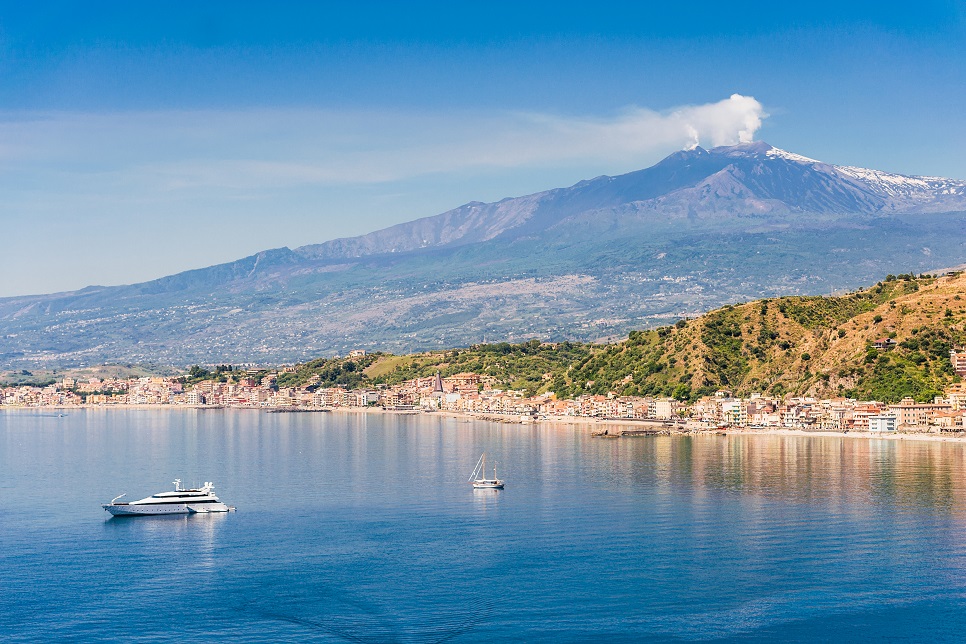
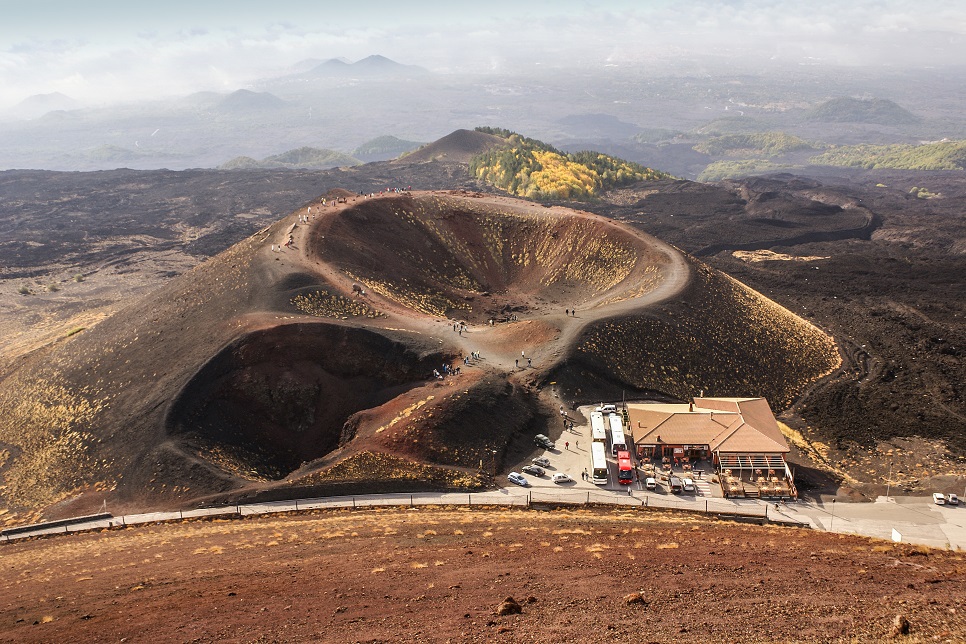
.jpg)
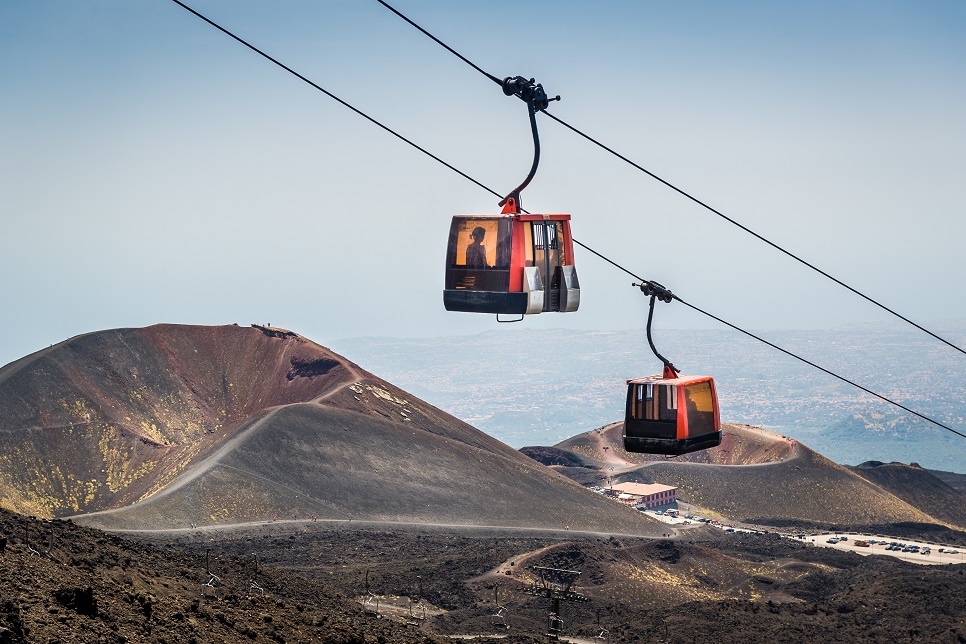

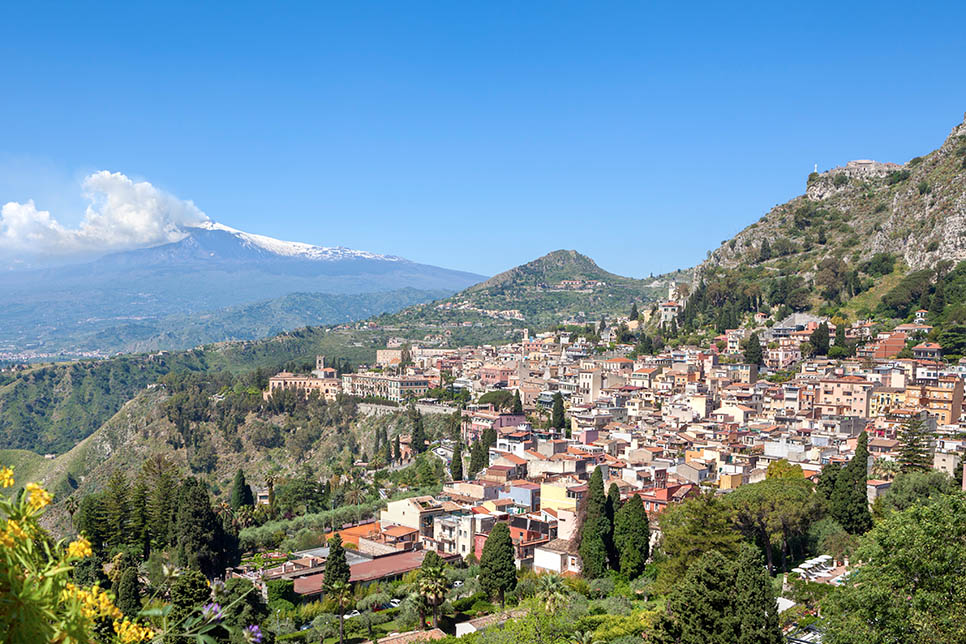
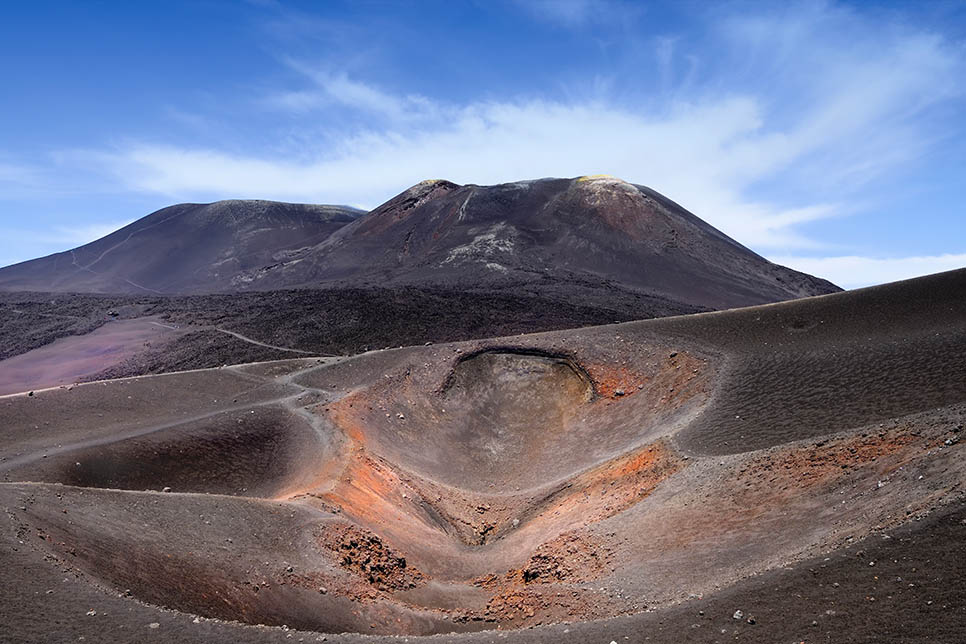
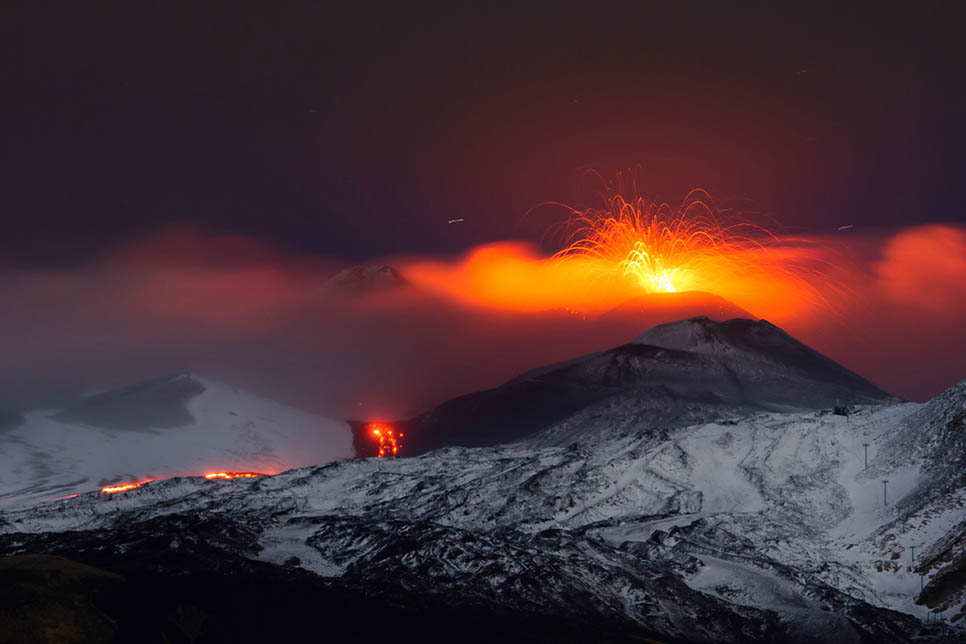
.jpg)


.jpg&h=150&w=186&zc=0)





.jpg&h=150&w=186&zc=0)